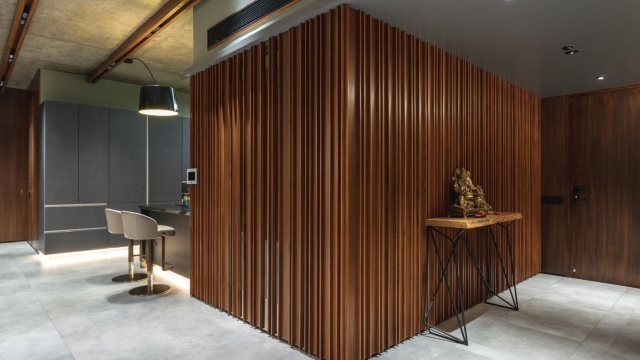With the ever-evolving world of design, there has been a notable shift towards the convergence of architecture and interior design. No longer bound by separate realms, these two disciplines now seamlessly blend together, creating a harmonious fusion that transcends their traditional boundaries. This dynamic integration has sparked a fresh approach to the way spaces are conceptualized, planned, and executed, resulting in awe-inspiring environments that engage and captivate. The interplay between architecture and interior design has become a key element in the creation of spaces that not only embody functionality but also reflect the unique vision and personality of their inhabitants. Whether it’s the seamless transition from exterior to interior, the meticulous consideration of spatial flow, or the deliberate choice of materials and finishes, the synergy between architecture and interior design has opened up a world of possibilities, breathing new life into the built environment.
Exploring the Relationship
Architecture and interior design share a deep connection, as they intertwine to create spaces that are functional, aesthetically pleasing, and harmonious. Both disciplines work together to shape our built environment, blurring the boundaries and merging seamlessly to enhance the human experience.
With architecture, the focus lies on the shell and structure of a building. Architects consider factors such as location, climate, and history to design structures that are durable, safe, and visually appealing. They give careful thought to the overall form, spatial arrangement, and the interplay between light and materials. Architects lay the foundation for interior designers to work their magic and bring the spaces to life.

Interior design, on the other hand, concentrates on the interior elements that make a space functional and conducive to human activities. Interior designers consider factors such as ergonomics, circulation, and aesthetics to create environments that are both visually appealing and highly efficient. They work with colors, textures, furniture, and fixtures to enhance the architectural experience and imbue spaces with a desired mood or atmosphere.
Interior Design
The symbiotic relationship between architecture and interior design is evident in the way they inform and influence each other. While architecture sets the stage, interior design adds the finishing touches, transforming empty structures into inviting and purposeful spaces. The successful collaboration between architects and interior designers ensures that buildings are not only visually striking but also fulfill the needs and desires of the people who use them.
The Seamless Integration
In the world of Architecture & Interior Design, the merging of these disciplines has resulted in a seamless integration that brings together the best of both worlds. This harmonious fusion allows for a holistic approach to creating spaces that are not only aesthetically pleasing but also functional and purposeful.
Architecture, with its strong foundation in structural design and engineering, forms the framework upon which the interiors are built. It sets the stage for the overall layout and spatial arrangement, taking into account factors such as lighting, ventilation, and accessibility. By considering these aspects from the outset, architects ensure a solid foundation for a successful integration with the interior design elements.
Interior design, on the other hand, brings the space to life by focusing on the finer details. It encompasses the selection of materials, color schemes, furniture, and decorative elements that enhance the functionality and visual appeal of the space. Interior designers work hand in hand with architects to understand the architectural constraints while also infusing their creative vision into the designs.
The result of this seamless integration is a space that not only harmonizes the exterior and interior but also creates a cohesive experience for the inhabitants or users. It allows for a smooth flow and transition between different areas, with each space complementing the other in terms of aesthetics, functionality, and purpose. This collaboration between architects and interior designers is essential in achieving a successful fusion that exceeds the expectations of both disciplines.
By fostering a close working relationship and open communication, architects and interior designers can leverage each other’s expertise and create spaces that truly resonate with the users. This collaboration breaks down the traditional boundaries between the two disciplines, paving the way for innovative and groundbreaking designs that blur the lines of architecture and interior design.
Enhancing the User Experience
The fusion of architecture and interior design has brought about significant advancements in enhancing the user experience. By seamlessly integrating both disciplines, designers are able to create spaces that not only look visually appealing but also prioritize functionality and comfort.
One of the primary ways this harmonious fusion can improve the user experience is through the careful consideration of spatial planning. Architectural and interior design elements are now thoughtfully intertwined to optimize the flow and functionality of a space. This means that not only is the layout of a building well-crafted, but the interior elements such as furniture and fixtures are strategically placed to provide maximum usability and convenience to the occupants.
Furthermore, the collaboration between architects and interior designers has also led to the seamless integration of technology in design. The incorporation of smart home systems, automated lighting, and integrated audiovisual solutions has transformed buildings into futuristic and interactive spaces. These technological advancements not only enhance convenience but also contribute to a more intuitive and enjoyable user experience.
Another way architecture and interior design contribute to enhancing the user experience is through the effective use of materials and finishes. By combining the expertise of architects and interior designers, spaces can be designed with materials that not only look aesthetically pleasing but also offer high performance and durability. For instance, the use of sustainable materials not only promotes eco-friendly practices but also creates healthier indoor environments, contributing to a better overall experience for users.
In conclusion, the fusion of architecture and interior design has revolutionized the way spaces are conceived and experienced. By prioritizing functionality, incorporating technology, and utilizing high-quality materials, professionals in this field strive to enhance the user experience, surpassing the boundaries between architecture and interior design.


